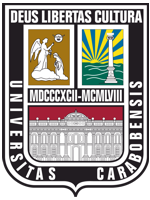Efectividad del uso de sistemas de medios de proyección digitales interactivos en la enseñanza de materias vocacionales y en actividades profesionales
DOI:
https://doi.org/10.46502/issn.1856-7576/2024.18.03.8Palabras clave:
sistemas de medios de proyección interactivos digitales, educación, actividad profesional, estudiantes, actividad innovadora, instituciones de educación superior.Resumen
El artículo muestra la eficacia de la tecnología y revela la disposición de los estudiantes para utilizar sistemas de medios de proyección digitales interactivos en actividades educativas y profesionales. Se divulga el contenido del proceso educativo interactivo y sus componentes. Se muestra la esencia y la importancia de los sistemas de medios de proyección interactivos digitales en la enseñanza de materias profesionales. Como ejemplo de sistemas de proyección interactivos digitales, se muestra un efectivo complejo tecnológico-software interactivo basado en SMART Board, las funciones interactivas del software interactivo SMART Board creado específicamente para el espacio educativo en la enseñanza de materias vocacionales y las ventajas del panel interactivo en Se revela el espacio educativo de una escuela superior. Se analizan formas de desarrollar las competencias profesionales del docente al utilizar un panel o pizarra interactiva en las clases de una escuela superior. Se muestra la efectividad de los libros de texto electrónicos, manuales de complejos educativos y metodológicos electrónicos, publicaciones multimedia informativas y de referencia, publicaciones educativas y de desarrollo de juegos, centros de investigación científica STEM, clases multimedia, laboratorios virtuales, clases virtuales, etc.
Citas
Bonch-Bruievych, H. F., & Nosenko, T. I. (2010). SMART Board interactive complex in the educational process: study guide. Kyiv: Kyiv University named after B. Hrinchenko. https://elibrary.kubg.edu.ua/id/eprint/7919/1/Bonch_Nosenko_IKSBNP.pdf
Budnyk, O., Rembierz, M., Arbeláez-Encarnación, T. F., Rojas-Bahamón, M. J., Arbeláez-Campillo, D. F., Chinchoy, A., & Matveieva, N. (2022). Formation of tolerance in the inclusive environment of an educational institution. Amazonia Investiga, 11(56), 305-319. https://doi.org/10.34069/AI/2022.56.08.29
Bykov, V. Yu. (2008). Models of organizational systems of open education: monograph. Kyiv: Atika. https://core.ac.uk/download/pdf/11084479.pdf
Dzhurynskyi, P., Broiakovskyi, O., Tsviakh, O., Koshliak, M., Turchak, A., & Zalizniak, A. (2023). Innovative dimension of effectiveness in physical education student learning. Amazonia Investiga, 12(72), 167-179. https://doi.org/10.34069/AI/2023.72.12.15
Hevko, I. V. (2018). Use of interactive technologies in education. Collection of Scientific Works, 139, 53-60. https://enpuir.npu.edu.ua/bitstream/handle/123456789/24374/Hevko.pdf?sequence=1
Hrytsenko, A. (2023). Opportunities of the information and educational environment in historical education. In Actual problems of theory and methods of teaching history: Materials of the All-Ukrainian Scientific and Practical Conference (pp. 216-221). Zaporizhia: Zaporizhia National University. https://sites.znu.edu.ua/interactiv.edu.lab/Conference/aktual__n___problemi_tmn__.pdf
Knysh, I., Budanova, O., Vakulenko, S., Syrotina, O., & Popychenko, S. (2023). Innovative educational technologies as a way of higher education enhancement. Amazonia Investiga, 12(68), 21-32. https://doi.org/10.34069/AI/2023.68.08.2
Kozmenko, O., Popovych, I., Arbeláez-Campillo, D.F., Rojas-Bahamón, M.J., & Volchenko, L. (2022). Structural and functional model of the successful person training in USA colleges and universities. Amazonia Investiga, 11(55), 143-155. https://doi.org/10.34069/AI/2022.55.07.15
Kuchai, O., Hrechanyk, N., Pluhina, A., Chychuk, A., Biriuk, L., & Shevchuk I. (2022). World Experience in the Use of Multimedia Technologies and the Formation of Information Culture of the Future Primary School Teacher. International Journal of Computer Science and Network Security, 22(3), 760-768. https://acortar.link/GzXUdb
Kuchai, O., Kuchai, T., & Pyrzyk, I. (2017). Studying the peculiarities of education development in Japan (in terms of primary education). Science and Education, 25(5), https://doi.org/10.24195/2414-4665-2017-5-7
Lishchynska, L. B. (2018). Features and perspectives of development of interactive educational space HEI. In Interactive educational space of HEI (pp. 21-23). Vinnytsia: VTEI KNTEU. https://ir.lib.vntu.edu.ua/bitstream/handle/123456789/31577/71035.pdf?sequence=2&isAllowed=y
Lytvynova, S. H. (2011). Virtual classroom for organizing individual education of students. Information Technologies and Learning Tools, 1(21). https://lib.iitta.gov.ua/id/eprint/196/1/statja-3.pdf
Marrero-Sánchez, O., & Vergara-Romero, A. (2023). Digital competence of the university student. A systematic and bibliographic update. Amazonia Investiga, 12(67), 9-18. https://doi.org/10.34069/AI/2023.67.07.1
Matsiuk, V. M., & Pryimak, I. M. (2022). Mobile technologies as a means of learning in physics classes. In Training future teachers of physics, chemistry, biology, and natural sciences in the context of the requirements of the New Ukrainian School (p. 221–223). Ternopil: TNPU named after Volodymyr Hnatyuk. http://physicsnature.tnpu.edu.ua/article/232/
Nikolenko, K., Korneiko, Yu., & Dobrostan, O. (2023). Interactive technologies and their application in mobile learning: Differences, challenges, and advantages. Academic Visions, (26), 1-13. https://academy-vision.org/index.php/av/article/view/790
Plakhotnik, O., Zlatnikov, V., Strazhnikova, I., Bidyuk, N., Shkodyn, A., & Kuchai, O. (2023). Use of information technologies for quality training of future specialists. Amazonia Investiga, 12(65), 49-58. https://doi.org/10.34069/AI/2023.65.05.5
Rojas-Bahamón, M. J., & Arbeláez-Campillo, D. F. (2023). Transforming editorial and peer review processes for a digital age. Amazonia Investiga, 12(61), 7-9. https://doi.org/10.34069/AI/2023.61.01.0
Shakun, N., Zivenko, O., & Salnyk, I. (2023). Use of interactive technologies in STEAM education: advantages and challenges. Herald of Science and Education, 6(12), 646-656. https://doi.org/10.52058/2786-6165-2023-6(12)-646-656
Shevchuk, P., & Fenrich, P. (2005). Interactive learning methods: education manual. Szczecin: WSAP Publishing House. https://nmc-pto.rv.ua/DOK/IMN_2005.pdf
Spirin, O. M. (2021). Digitization of education, the educational process. In Encyclopaedia of Education (pp. 1099–1100). Kyiv: Yurinkom Inter. https://lib.iitta.gov.ua/id/eprint/730769/1/Цифровізація%20освіти%20Освітнього%20процесу%20Спірін%20ЕБ.pdf
Sulym, V., Melnykov, A., Popov, M., Vechirko, O., & Malets, D. (2023). Improving education through implementation of information technologies into the educational process. Amazonia Investiga, 12(68), 281-293. https://doi.org/10.34069/AI/2023.68.08.26
Tolochko, S., Bordіug N., Mironets, L., Mozul, I., & Tanasiichuk, I. (2023). Forming ecological culture in educational applicants within the context of modern education. Amazonia Investiga, 12(61), 41-50. https://doi.org/10.34069/AI/2023.61.01.5
Truskavetska, I. Ya. (2023). Mobile learning as an effective tool for the professional training of future teachers of biology and the basics of health. Scientific Innovations and Advanced Technologies, 10(24), 732-739. https://doi.org/10.52058/2786-5274-2023-10(24)-732-739
Tsiuniak, O. P., & Sultanova, L. Yu. (2021). Understanding the problem of professional training of future teachers of primary grades in the conditions of digital transformation of education. Academic Studies. Series "Pedagogy, 2(3), 208-214. https://doi.org/10.52726/as.pedagogy/2021.3.2.31
Tsukanova, N., Kanosa, N., Hordiichuk, M., Popovych, O., & Kotelianets, N. (2023). The transformation of the training of preschool educators in the digital age. Amazonia Investiga, 12(72), 31-44. https://doi.org/10.34069/AI/2023.72.12.3
Vykhrystiuk, M., & Salnyk, I. (2022). Introduction of mobile learning technologies. Scientific Notes of Young Scientists, 10. https://phm.cuspu.edu.ua/ojs/index.php/SNYS/article/view/1977
Zinoruk, A. V. (2022). Theoretical aspects of interactive technologies. International Scientific Journal "Grail of Science", (12–13), 589-591. https://doi.org/10.36074/grail-of-science.29.04.2022.101
Descargas
Publicado
Cómo citar
Número
Sección
Licencia
Derechos de autor 2024 Vitalii Alekseiko, Inna Savina, Oleksandra Khallo, Oleksandr Ihnatenko, Iryna Andreikova

Esta obra está bajo una licencia internacional Creative Commons Atribución 4.0.















